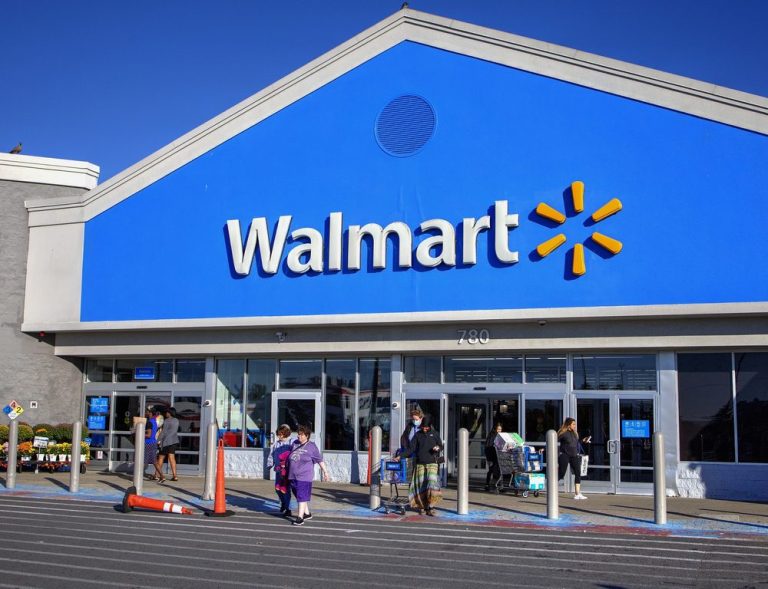
Coming off its first-ever $600 billion year of sales, Walmart told investors Tuesday (Feb. 21) that even though economic concerns continue to cloud the future, it has never been more optimistic about its hand in the broader retail game.
“One of the things I’ve always appreciated about this company is that it’s naturally hedged,” Walmart CEO Doug McMillon told investors on the company’s Q4 earnings call, noting its ability to shift inventory to meet changing consumer needs.
“If the economy is strong, our customers have more money — and that’s great. If things are tougher, they come to us for value and with today’s inflation we’re continuing to see that happen,” McMillon continued, explaining to analysts how the Arkansas-based retail giant had grown revenue 7% last quarter while its e-commerce business rose by 17%.
The net result, he said, was that Walmart was not only gaining share across income cohorts — including at the higher end, which made up nearly half of the gains — but that the operator of nearly 5,000 domestic locations within 10 miles of 90% of the U.S. population had truly become what he called a “people-led, tech-powered, omnichannel retailer.”
“When we think about our business today compared to what it was during prior economic downturns, we now have a more compelling offer, a true omnichannel experience that makes us optimistic that more higher income families will continue shopping with us across categories because we have pickup delivery and membership, and we’re improving in categories like apparel and home,” McMillon said while highlighting the tailwind of recently remodeled U.S. stores that have generated a promising early response.
With rivals like Amazon, Target, Kroger, Ahold and countless others chasing Walmart’s lead in food and beverage, as well as unprecedented competition within eCommerce, delivery and pickup, the retail business is anything but simple right, and yet, the team in Bentonville never stray too far from their founder’s ethos set 60-years ago.
“Big picture: our strategy is simple. It’s to bring our purpose to life for those we have the privilege to serve. We’re a people-led, tech-powered, omnichannel retailer that’s dedicated to helping people save money and live a better life. That’s who we are,” McMillon said before noting ways that this evolving version of Walmart was taking shape around the world.
Examples include Scan-and-Go self-checkout at Sam’s Club as well as a new in-house conversational artificial intelligence (AI) platform, which he said has enabled voice and chat capability for more than 50 million customers and 1 million employees in the U.S., Mexico, Canada and Chile.
Given that Q4 inflation was running at about 7%, Walmart told investors it was very pleased that it was able to wrap the quarter’s inventory in a flat position, including a 3% decline in the U.S.
According to Chief Financial Officer John Rainey, who will mark his first anniversary on June 6 after being recruited from PayPal, December was the largest sales month in Walmart U.S. history due to food sales which increased in the high teens, noting that that was partially offset by softness in toys, electronics, home and apparel.
While Rainey echoed that Walmart sees strong share gains in grocery and higher income households, he also noted that the changed product mix over the past year towards lower margin food, health and wellness was presenting its own bottom-line challenges but that Walmart was finding ways to adapt.
“Over the last two years, store-fulfilled delivery sales have nearly tripled and we’re now doing over a billion dollars a month, which gives you an indication of why we’re so excited about the progress here,” Rainey said in the call, while also noting a 41% increase in its nascent advertising business as well as plans to expand the physical footprint at Sam’s Club.
In hard numbers, Rainey said Walmart was expecting 2.5% to 3% sales growth this year — in what he called a cautious outlook for the year.
“As we sit here today, we find ourselves in a similar position to each of the last three years where there is a great deal of uncertainty looking out over the balance of the year,” he said.
While supply chain issues have abated, he said prices are still high and there is still considerable pressure on consumers, a combination that makes predicting macroeconomic swings and their effect on customers particularly challenging.
“As such, our guidance reflects a cautious outlook on the macro environment,” he said, “but at the same time, our excitement about our recent results, momentum in all segments and progress on our strategy — both for this year and the years that followed — we are positioned well and convicted about our plan.”
For all PYMNTS retail coverage, subscribe to the daily Retail Newsletter.